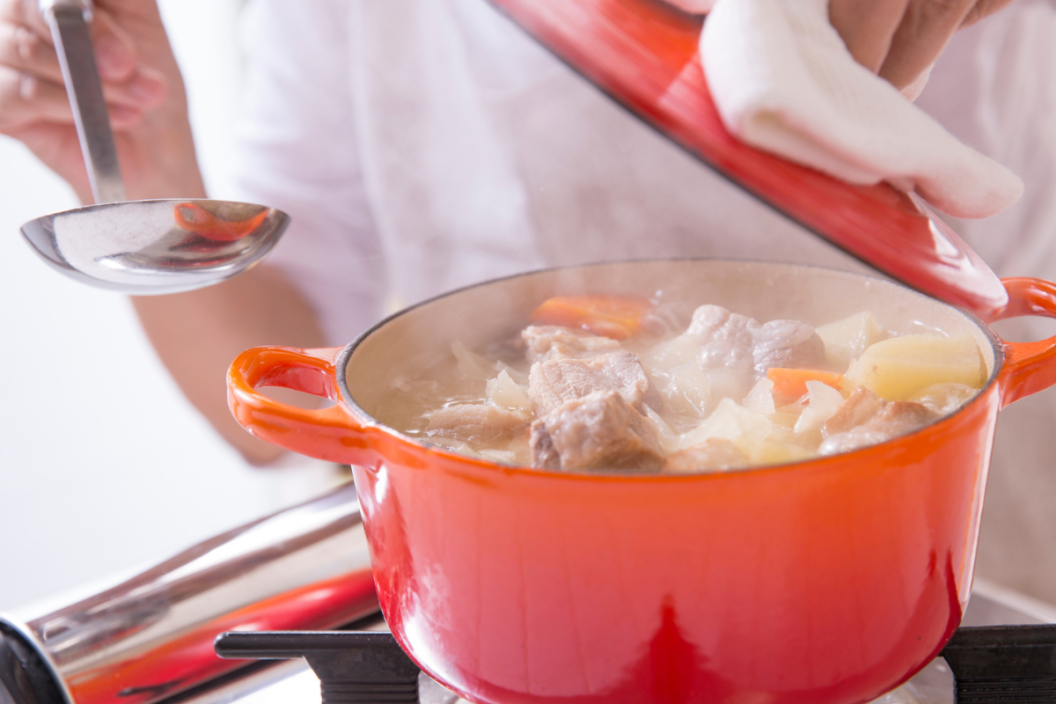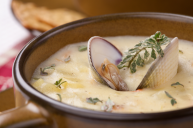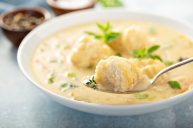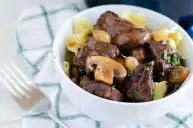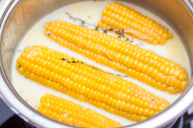We've all been there- you've bought all the ingredients you need and are going step by step through the recipe, when you get to an instruction that you have no idea how to follow. For some it might be "cream the butter," while others might get stuck on "make a roux." One instruction that seems less than clear is simmering. What does it mean to simmer, and why do we do it instead of boiling?
How To Simmer
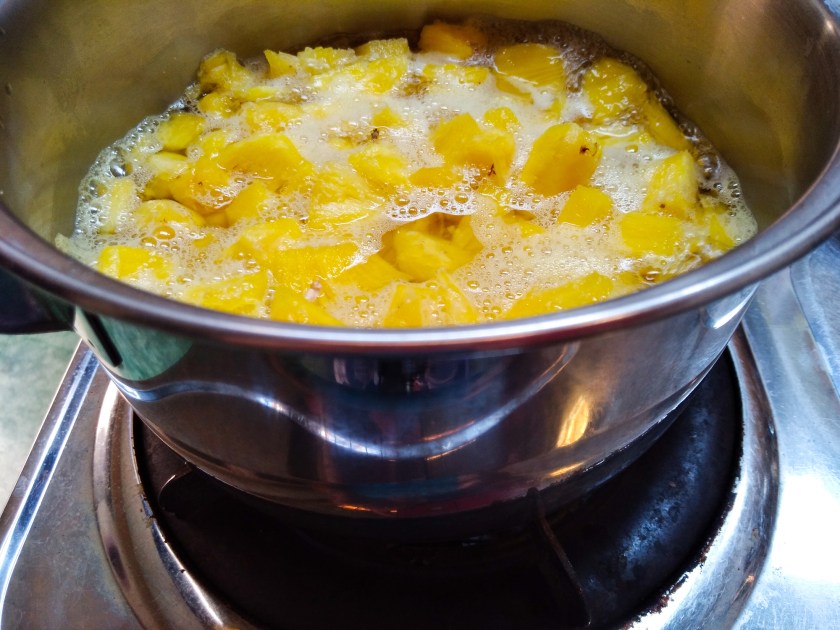
Getty Images/Adrian Teoh
Simmering is a word you'll see most often in recipes for soups, broths and other liquid-based foods. It's also common in recipes for grains like rice or quinoa that cook in water. This cooking technique involves keeping liquid right below the boiling point of water, around 185 to 205 degrees Fahrenheit.
To get to this temperature, your recipe will instruct you to bring the liquid to a boil, and then reduce heat to a simmer. You'll know that the liquid is boiling when there are large bubbles continuously coming to the surface of the water. To bring this down to a simmer, gradually turn down the heat until there are only small bubbles breaking the surface. The liquid will be bubbling gently in contrast to the large, fast bubbles that you'll see when boiling water.
You might need to adjust the temperature a few times before it remains at a consistent simmer. It's best to keep the pot or pan uncovered, since adding a lid will increase the temperature and might bring it back to boiling. To decrease the temperature without changing the heat, move the pot or pan to the side of the burner. You can also add a bit of extra liquid, which decreases the temperature and can quickly bring your dish to a simmer.
Why Simmering is the Way to Tasty Soups
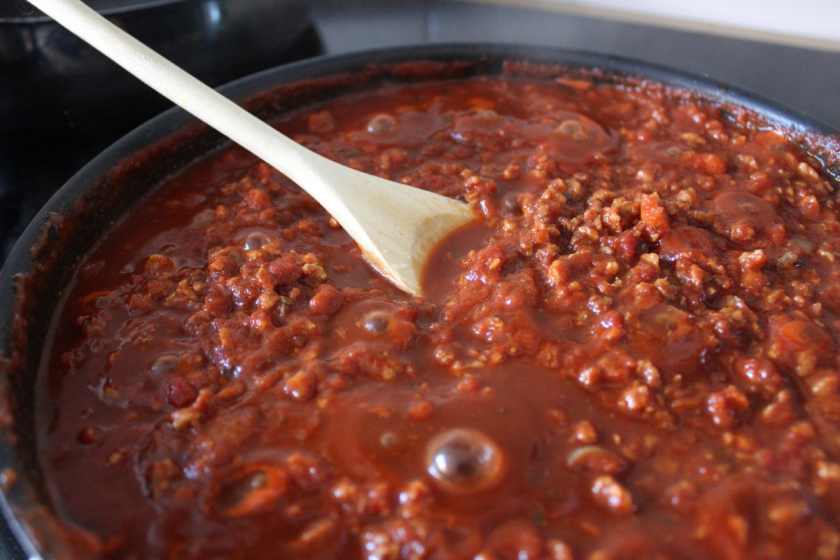
Getty Images/Warren_Price
Since boiling is a quick and effective way to cook, it might seem tempting to just leave the dish boiling and enjoy it sooner. However, simmering has its place in the world of cooking and is more than just a lesser version of boiling.
Simmering is ideal for dishes that are tender and might fall apart if agitated. Because of this, recipes for fish, shellfish, veggie patties and other softer foods often call for a simmer rather than a boil. When it comes to these softer foods, boiling can lead to mushiness, ruining the dish's texture. Simmering allows you to cook the dish gently, leading to the perfect texture.
Another perk of simmering is the flavor that results from it. Simmering takes extra time, but it allows all of the ingredients to blend together, leading to a stronger, more complex flavor at the end. This also makes for less cloudiness in soups and stocks, along with preventing burning. Since you simmer at a lower temperature than when boiling, the heat is less intense and less likely to scorch your food.
Types of Simmer
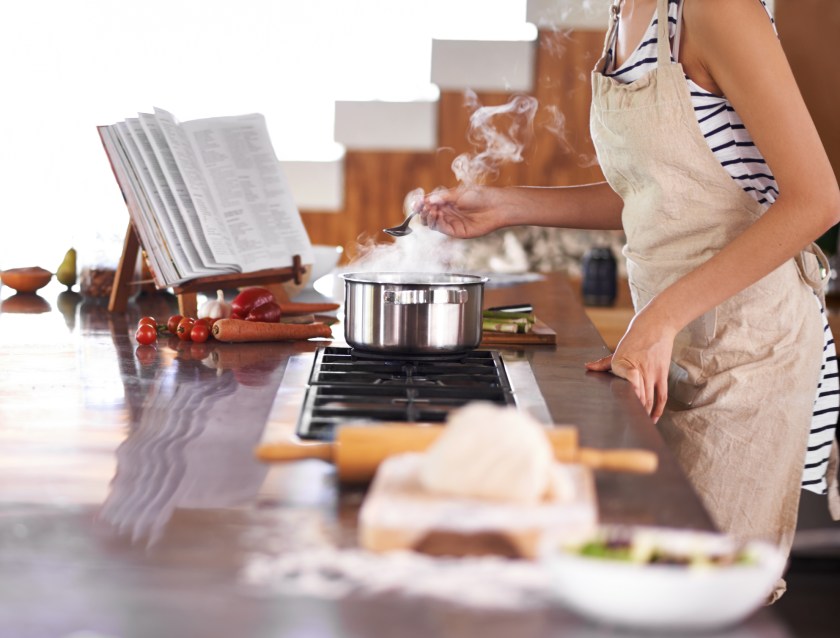
Getty Images/Yuri_Arcurs
You may come across a recipe that specifies the type of simmer to use. Slow simmers are often used for stocks or other dishes that will blend together in flavor over a long period of time. Rapid simmers, on the other hand, are typically used to reduce sauces and thicken liquids.
- Slow simmer: around 185 degrees F, very little activity in the liquid, a few bubbles every few seconds but mostly just steam
- Simmer: 185 to 205 degrees F, gentle bubbling, with a few small bubbles coming to the surface every second
- Rapid simmer: around 205 degrees F, small bubbles consistently coming to the surface
Once you've mastered the art of simmering, you're ready to make flavorful, delectable sauces, soups, fish dishes, and stews! Here are a few recipes to try it for yourself.
